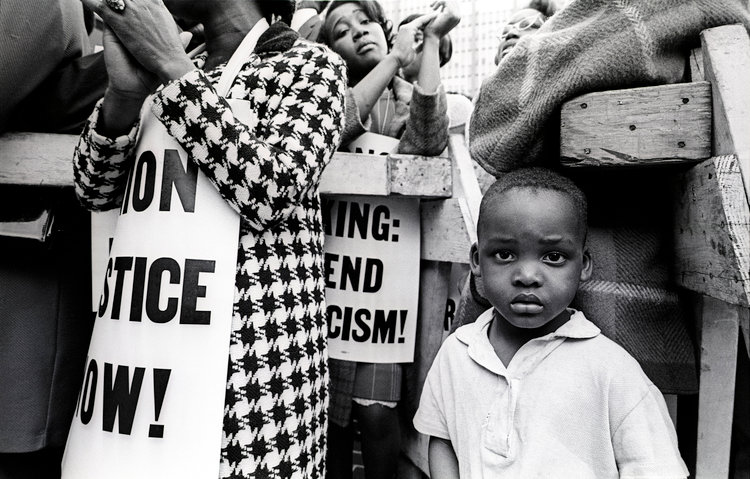The Revolution Must Be Resourced
As a child of the seventies and eighties I have the pleasure of being born in the dancing days that followed the last big wave of the civil rights construction period. A robust cultural moment when many of the spokeswomen and men had already been martyred, mainstreamed, or made to mark time as literal prisoners of politics. The ideas they embodied took shape in the codification of laws, designed to draw lines around an evolving acknowledgement that the status quo could not be left standing.
What emerged was an architecture of fits and starts that provided an outline of safeguards against discrimination based on race, color, religion, sex, or national origin. Other gains include prohibitions against discrimination in housing-related transactions, and extensions to familial status, and in recognition of the right to employment regardless of ability with a reasonable accommodation. The times even yielded some gains in the right to equal pay in labor, although the landscape is far from set and settled.
We can at least agree that these actions represented a power shuffle, if not a shift. So, let’s go further and agree that the sharp edges of those gains came at the expense of basic comfort, and that its footprint doesn’t fully cover the landscape of needs as they appear now, or the ways they presented then. Like any hero would, the social and nonprofit sectors emerged as a force to backfill the layers of leadership that it takes to get to good governance, strong oversight and forge ahead towards the yet unfulfilled promise of the full franchise of America.[1]
The resulting architecture of laws, statutes, executive orders and policies were at least supported in part by philanthropists. Philanthropy bolstered campaigns and the organizing efforts of able and willing activists to seed social engineering amongst oppressed populations. They added to the efforts to combat a moral recession that endangered black lives, fortunes and voices.[2] Black philanthropy is a part of that story, through donation, supplies and institutions of faith and community.
If we fast forward to the present day, we find ourselves in a parallel cultural moment. Across the electronic divide of time and technology we are witness to a new onslaught of old terror, a disruption on the surface of civility, and the formation of virtual communities where networks are formed by ideology rather than geography.
These times are ripe for a massive intervention of the public spirit that meets the problem of entire systems of disrepair with dollars that can upend the dynamics at the root rather than pick off the proverbial fruit. To be clear, I am suggesting that in the decades since the Civil Rights Act of 1964, The Fair Housing Act of 1968, or in any act for Equal Pay the efforts did not go far enough. We have not gone far enough in the development of policy, the design of programming, the expansion of greenspace, or the education of children impacted by leaded water and inundated with designer drugs, or otherwise underserved to death in neighborhoods carved into automobile airsheds, where we doubled down on poor outcomes by uninterrupted enterprise that includes failed food systems where we do not dare to transport fresh and healthful food through deserts of our own making. I say “we” because the collectively conscious benefit from the maintenance of these divides and we should at least be bold enough own our part of the problem.
As we face another wave of political regression that threatens the next generation, we would be smart to do more than issue a call for leadership. We must invest in systems to undo systems. And any call for leadership must also be a call for community, which by its very existence provides support that feeds the vision. This should look like dedicated planning, support and diverse evaluation that bends to the culture rather than remakes it. To operationalize outcomes that we can live with we will need to align race forward policy with structures that mirror cultural values and include an understanding of the unique challenges of ecosystem development for traumatized peoples with an eye for equity, restoration and leadership at the highest levels that emerges from those being served.
To accomplish this, we need to undo the comfort of philanthropy that designs around issues and confront them instead. And among the tools, black philanthropy must be tuned to the inequity of demanding change from structures that consistently look beyond impacted communities and the ways they operate to solve for big challenges. Its time to develop new models for shifting power, to move resources and the reins on strategy, not just implementation, for success in building new systems, in emerging sectors with cultural humility rather than mere competence.
The dancing days are all but done and now is the time for systems change to avoid systemic failure. Black Philanthropy is especially capable of financing with a view towards cultural anchor institutions that operate out of relationships built within the structure of community to raise up leaders rather than collect them.
[1] Federal Taxation: What Is a Charitable Organization? Herman T. Reiling, American Bar Association JournalVol. 44, No. 6 (JUNE 1958), pp. 525-529, 595-598.
[2]See Philanthropists Help Finance the Civil Rights Movement, http://www.historyofgiving.org/1930-1980/1960-philanthropists-help-finance-the-civil-rights-movement Accessed (Accessed, August 1, 2018).
